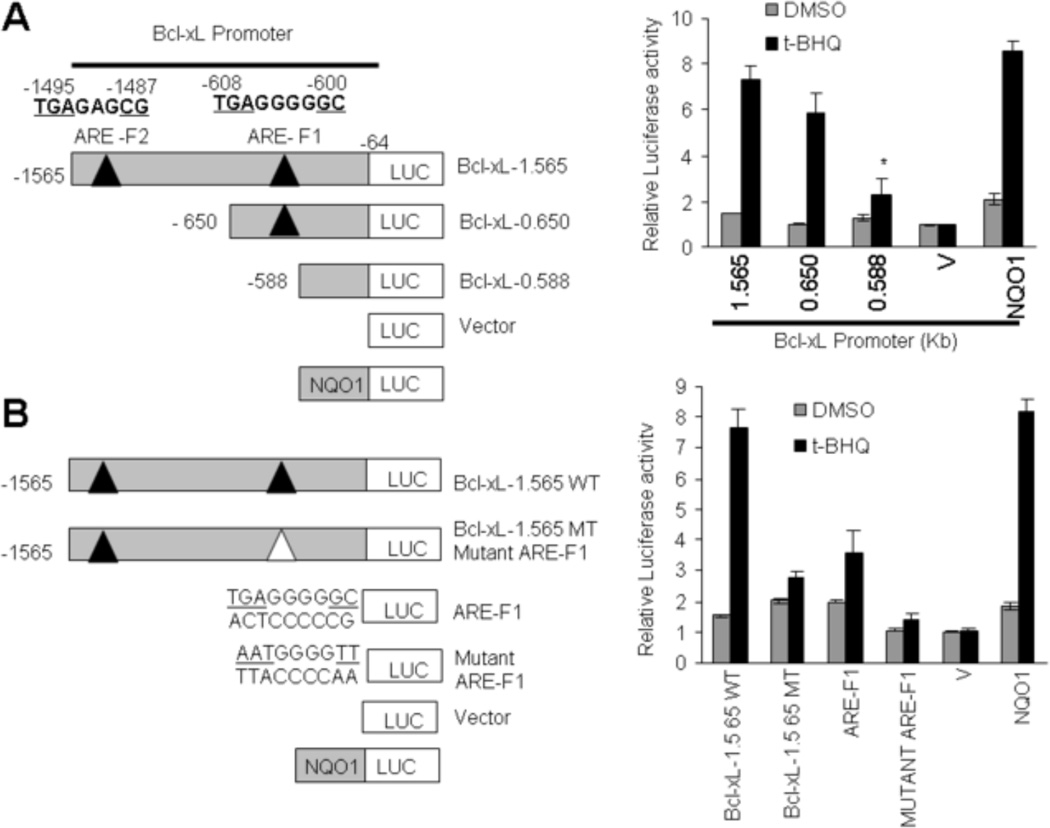Fig. 2.
ARE-F1 between nucleotides −608 to −600 in the forward strand of Bcl-xL gene promoter is essential for antioxidant induction of Bcl-xL gene expression.(A). Systematic representation and cloning strategy of mouse Bcl-xL gene promoter into PGL2B or pGL2P luciferase reporter vectors. Two putative ARE sequences of the Bcl-xL promoter (ARE-F1 and ARE-F2) on the sense strand are shown (upper left panel). Mouse Bcl-xL promoter (1.565 kb) and deletions were separately cloned into PGL2B luciferase (Luc) vector and plasmids were separately transfected in Hepa-1 cells. Cells were treated with DMSO or 50 µM t-BHQ for 24h, and luciferase activity was measured (right panels). Human NQO1-ARE luciferase reporter plasmid was also transfected in Hepa-1 cells as a positive control for t-BHQ-mediated luciferase gene induction. (B). Bcl-xL 1.56-WT (wild type) and Bcl-xL-1.56 MT (mutated ARE-F1) promoter plasmids were separately transfected in Hepa-1 cells and analyzed for luciferase gene expression. In the same experiment ARE-F1 and mutant ARE-F1 sequences were attached to SV40 basal promoter hooked to luciferase reporter gene by cloning in vector pGL2P, transfected in Hepa-1 cells, treated with DMSO or t-BHQ (50 µM for 24h), and analyzed for luciferase activity (rigut panel). Human NQO1-ARE luciferase reporter plasmid was also transfected in Hepa-1 cells as a positive control for t-BHQ-mediated luciferase gene induction. The data shown are mean ± S.D. of three independent transfection experiments. V, vector control.

